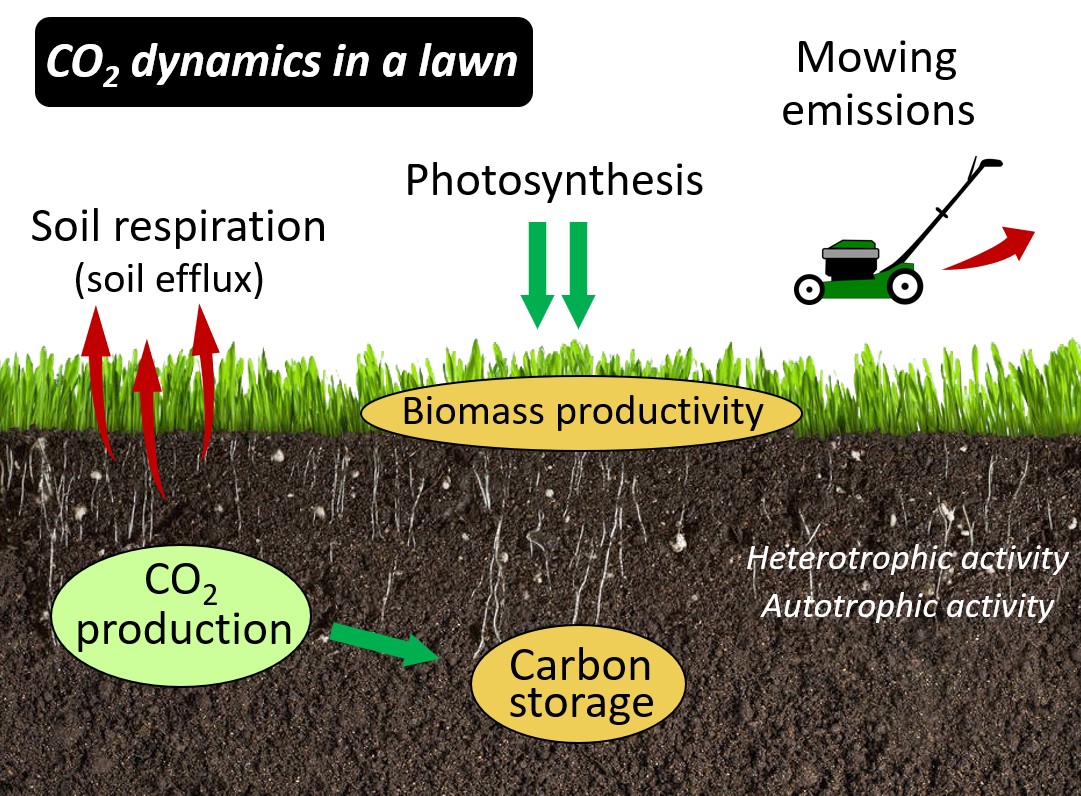Carbon dynamics in Singapore’s urban turfgrass
Researchers from the National University of Singapore’s Departments of Biological Sciences and Geography in collaboration with scientists from NPark’s Center for Urban Greenery and Ecology, and the University of Delaware investigated how plants and soil regulate the carbon exchange in Singapore’s turfgrass, and why it is important to identify and implement gardening practices that promote carbon storage and reduce the impact of maintenance activities. Bear in mind that the urban landscape is a disturbed ecosystem, and greenery may act either as a sink or an emission source for atmospheric carbon dioxide (CO2). Plants remove CO2 by photosynthesis; the majority is consumed in biomass production, but a fraction is transferred belowground and can return to the atmosphere by soil respiration. Therefore, integral assessments that include plants and soil, and which accounts for the carbon emissions associated with activities for maintaining aesthetic grounds, are needed to determine the real capacity of urban greenery to offset anthropogenic CO2 emissions.

